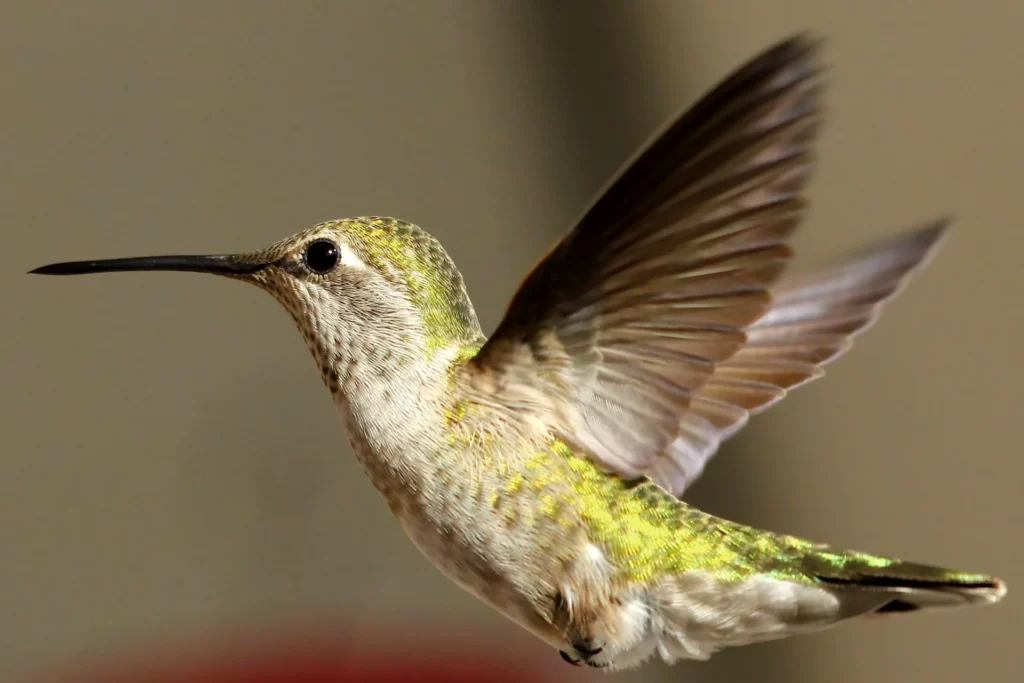Are you fascinated by the vibrant color of tiny hummingbirds? You must be wondering if they have some sort of magic that helps them change their color in just a blink of an eye.
Hummingbirds are naturally found in a wide range of colors. Each species has its own color patterns and hence can create optical illusions from different angles.
Let’s discover the truth behind the color-changing abilities of these tiny little creatures.
Do Hummingbirds Change Color?
In short, yes! Hummingbirds do have the ability to change color, but it’s not as magical as it seems. The ability behind the color changing is not something they do transformation rather, it’s a mere view of different angles.
The color changing is the effect of optical illusion created by its unique feathers. These color changes can range from deep blues and greens to more vibrant colors like red and purple.
Although the colors you see are not static and can change depending on different lighting conditions and angles, we observe them. This color variation makes us think that they are able to transform.
Hummingbirds have special feathers called iridescent feathers, which evolved to reflect the lights in astonishing ways. While color changing is indeed fascinating, it’s not part of a hummingbird’s core ability.
What Colors Can Hummingbirds Change To?
Hummingbirds can change a range of colors, and the mostly sighted color is green. While the specific color varies among different species, the common colors include green, red, purple, blue, orange, and even maroon.
Green is the color that usually comes to mind when thinking about hummingbirds. They have pigments in their feathers that reflect greens in most species. While green covers most of the body parts, they, too, shade other colors alongside.
Red and oranges are among the second most popular hues that are seen in the majority of birds. The color intensity can vary greatly depending on the light condition. These can range from deep reds to fiery oranges and pale yellow.
Purple and blue are not that common and can only be seen in rare light conditions.
Science Behind The Changing Colors
The science behind these color changes is the attribute they hold, known as iridescence. Different light conditions hit different colors hence we see a fascinating transformation.
The iridescent feathers of these birds are constructed in such a way that allows light to interact in a particular manner. The microscopic structures of these feathers are able to bend lights and scatter them, which displays beautiful color combinations.
The ability to manipulate the color serves a unique purpose which is to attract female hummingbirds. Male birds are able to display more color variants than female birds.
The Advantage Of Changing Colors
Hummingbirds can change colors for camouflage, this ability to change color helps them blend in a diverse environment where they need protection and also for food sourcing.
Their color-changing ability also helps them communicate and establish territories where they can assert dominance. This skill is crucial for their survival and assistance in different situations.
5 Stunning Color Changing Hummingbirds
Among all, there are few hummingbird species that exhibit stunning color-changing abilities. Let’s take a look at the 5 color-changing hummingbirds.
1. ANNA’S HUMMINGBIRD

Anna’s hummingbirds are truly amazing when it comes to coloration. This species can display dazzling emerald green when the sun hits its plumage. The species can also exhibit a radiant pinkish-purple hue when light hits just the right angle.
2. RUFOUS HUMMINGBIRD
The Rufous hummingbirds are true stunners when it comes to vibrant color. When the light touches its iridescence feather, it turns from fiery red to vibrant orange. This mesmerizing array of colors can take the breath away from the viewer. This color-changing ability adds an extra layer of enchantment to these tiny energetic creatures.
3. ALLEN’S HUMMINGBIRD
Allen’s hummingbirds are known for their emerald green feathers with a vibrant orange throat. When the sunlight hits Allen’s hummingbirds, it creates a view that will resemble a living jewel flying around. Its orange neck makes it truly unique from other species.
4. RUBY-THROATED HUMMINGBIRD

Ruby-throated hummingbirds, as the name suggests, have a ruby-red throat. This coloration comes from a unique feather structure similar to a prism. The iridescence of the feather causes this astonishing ruby-red throat. The ruby-throated hummingbird is a living piece of art that will leave a long impression.
5. COSTA’S HUMMINGBIRD
Costa’s hummingbirds are another species named after the French nobleman Louis Marie Pantaleon Costa. These species of hummingbirds showcase truly amazing majestic purple and green hues. If you see this rare masterpiece, be sure to capture the moment.
Conclusion
Hummingbirds are nature’s most amazing creation. Their unique coloration and charming behavior will surely impress anyone. Besides, these species are getting extinct day by day. So preserving and protecting their habitats is a moral duty for all of us.
So next time you spot a hummingbird fluttering by, remember the magic that lies within its colorful feathers.

